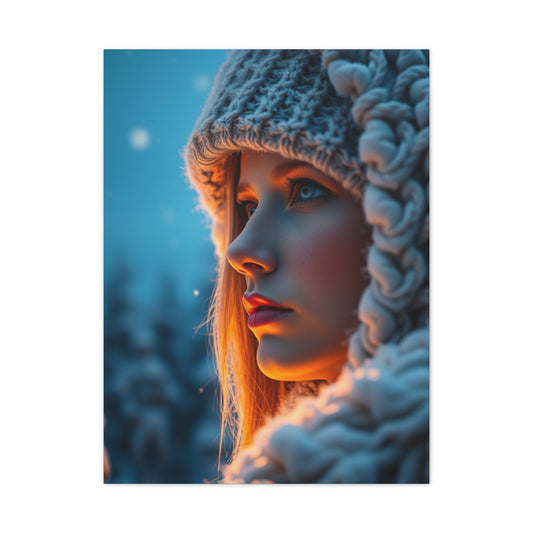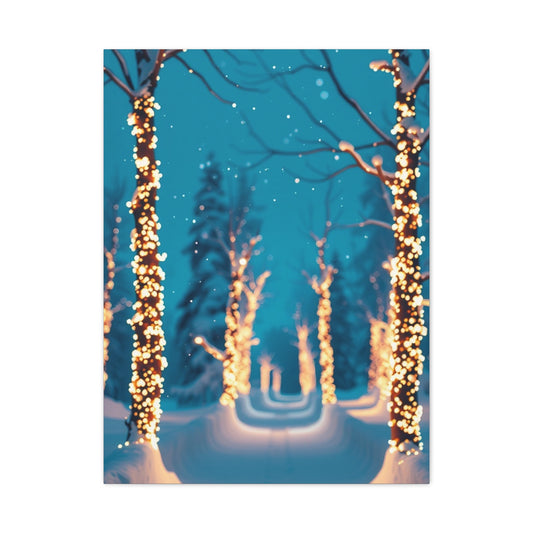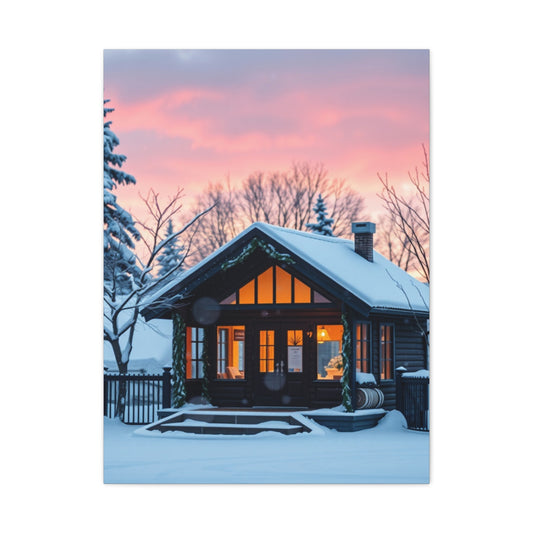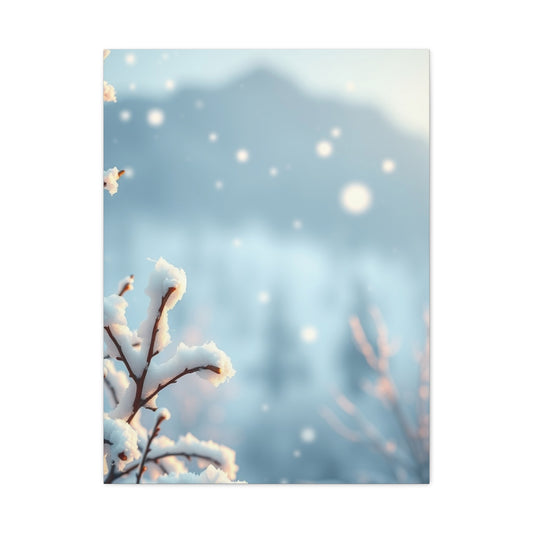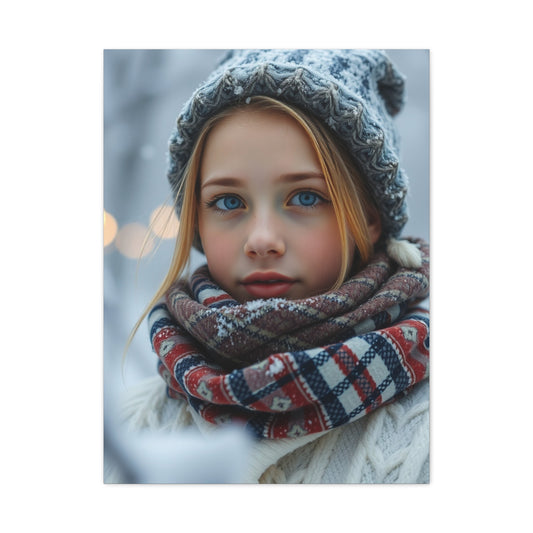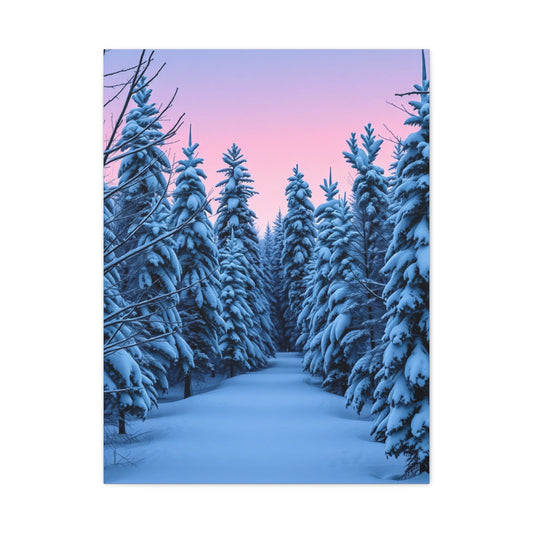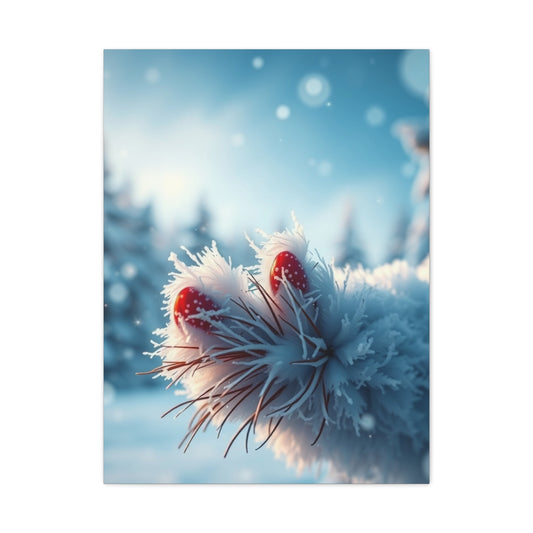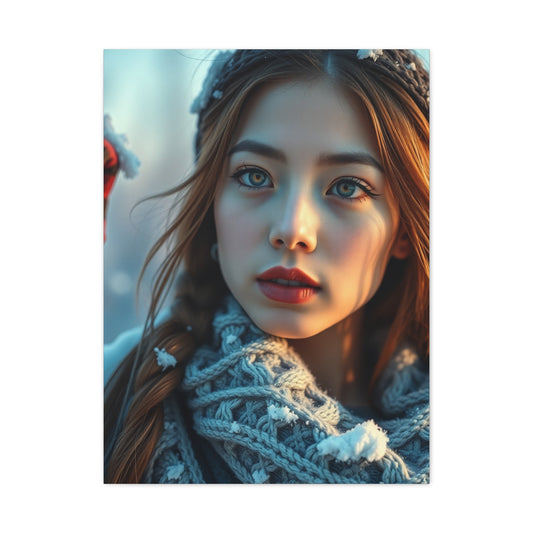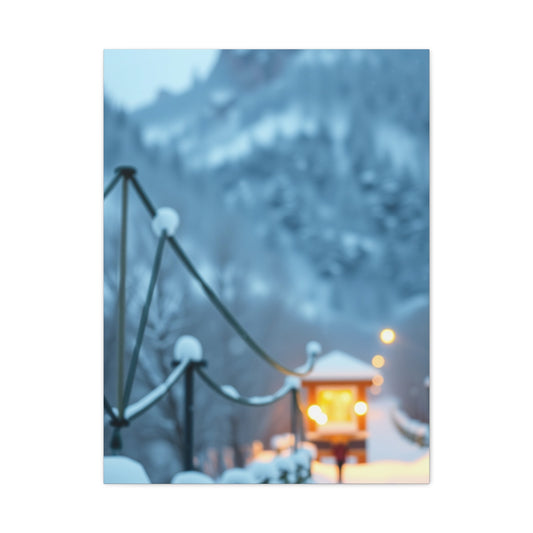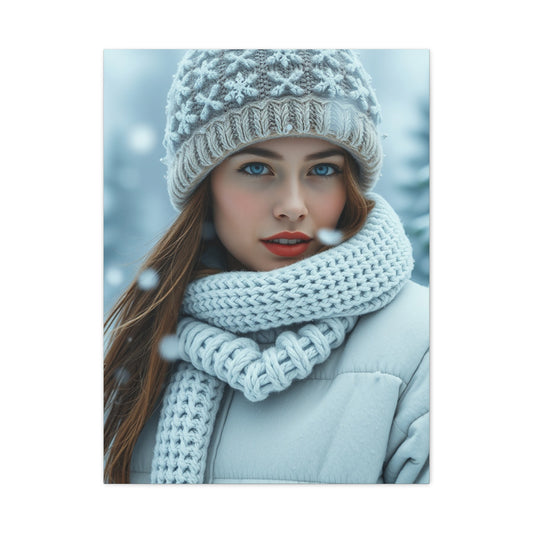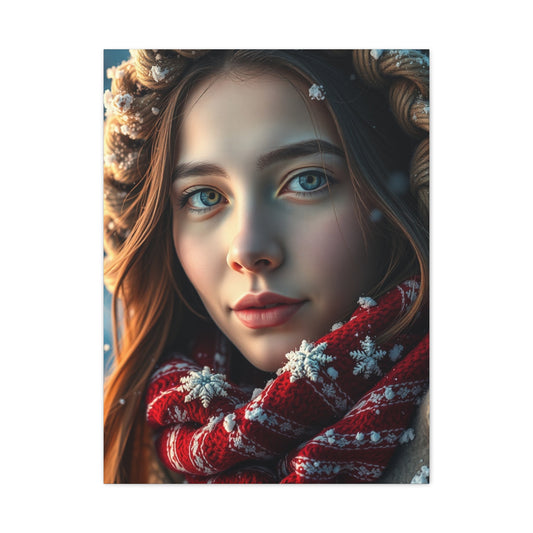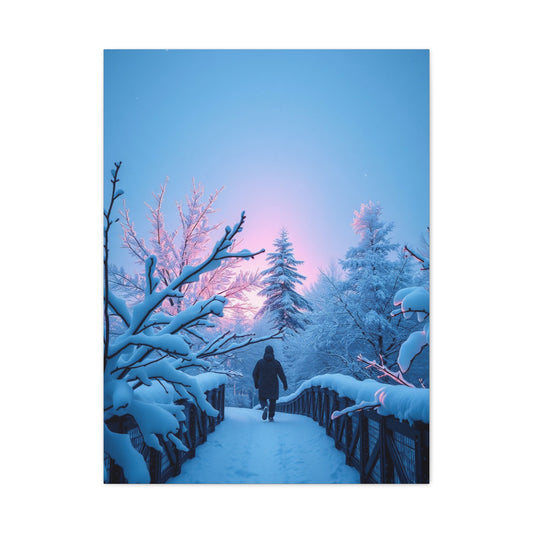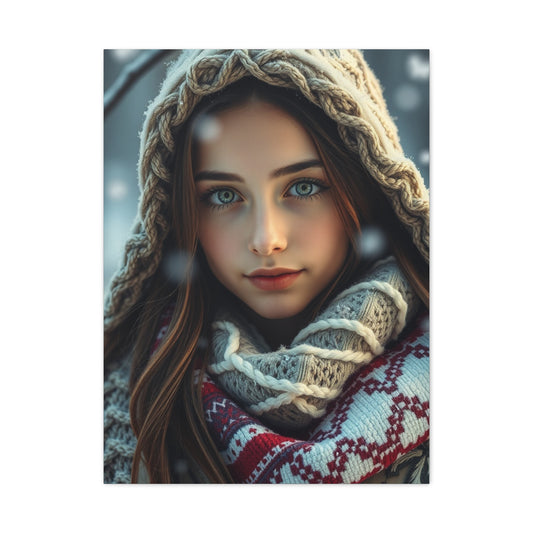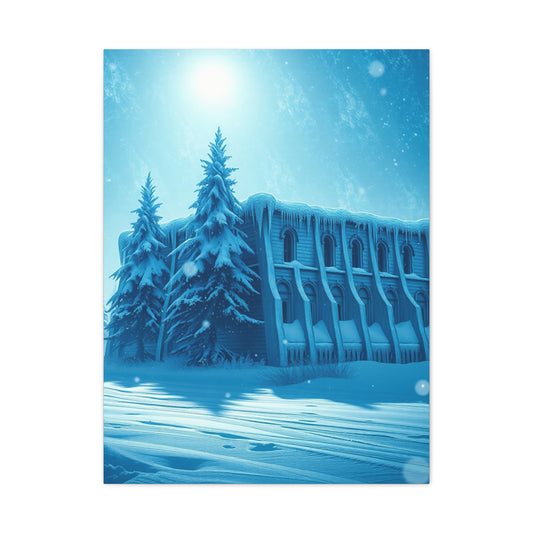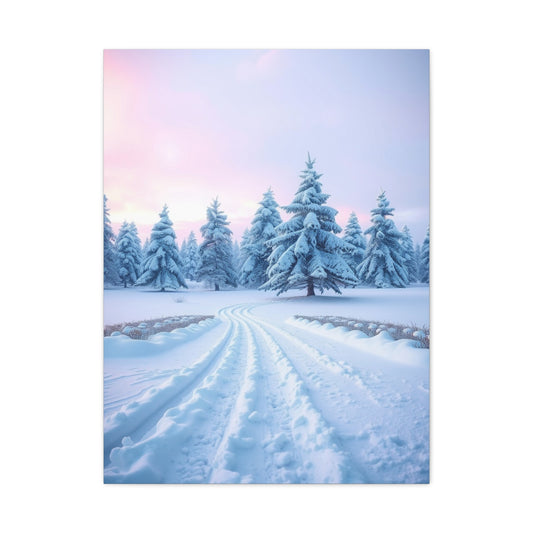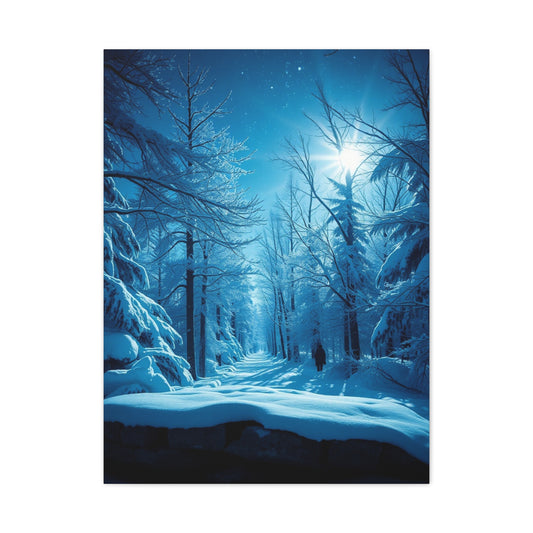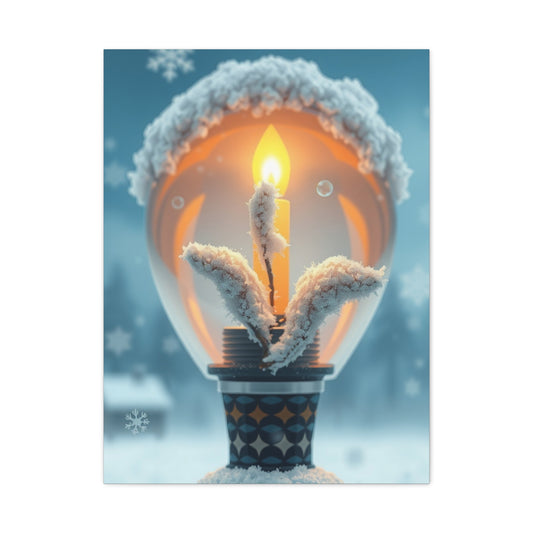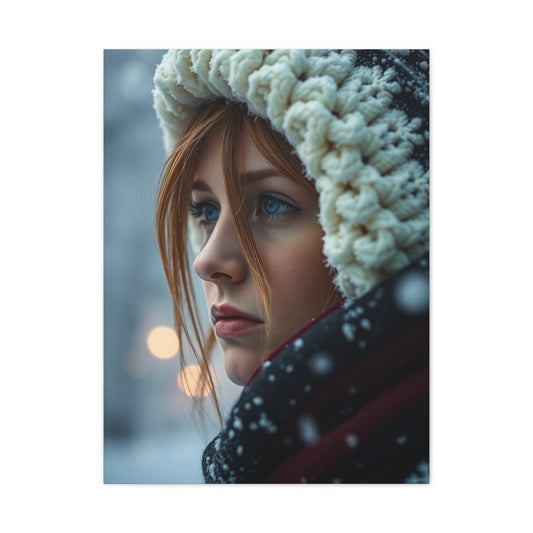Winter Wonders: Wall Art to Brighten the Cold Months
Winter is a season that carries a unique charm. The world outside transforms into a landscape of snow, frost, and muted colors, creating a sense of calm and tranquility. This seasonal transformation influences not only the natural environment but also our emotions and daily routines. The cold weather encourages indoor activities, making the home an even more central part of our lives during this time. As we spend more time indoors, the importance of creating a warm and inviting atmosphere becomes evident. One of the most effective ways to achieve this is through the thoughtful selection of wall art that reflects the beauty and serenity of the winter season.
Art has the power to transform spaces, evoke emotions, and establish an ambiance that resonates with the spirit of the season. Winter-themed artwork allows homeowners to capture the essence of the season, whether it is the peacefulness of a snow-covered forest, the warmth of a fireplace scene, or the festive energy of holiday celebrations. This art can serve as a reminder of joyful memories, seasonal traditions, and personal experiences that make the winter months meaningful. By incorporating winter-inspired pieces into home decor, it is possible to create a cohesive and emotionally engaging environment that enhances the comfort and aesthetic appeal of living spaces.
Understanding the Role of Winter Artwork in Seasonal Decorating
Incorporating artwork into seasonal decorating is more than simply filling wall space. It is an intentional act that combines visual appeal with personal significance. Winter artwork, in particular, can serve multiple purposes within the home. It can act as a focal point, draw attention to specific areas such as a fireplace or entryway, and complement other decorative elements such as textiles, lighting, and furniture. Choosing artwork that reflects the season allows homeowners to establish a thematic consistency throughout their spaces, enhancing the overall design and creating a sense of harmony.
Winter landscapes remain one of the most popular choices for seasonal wall art. These pieces often depict snow-covered trees, icy rivers, and tranquil forests, capturing the quiet beauty of the season. Oil paintings, watercolors, and digital prints each offer distinct textures and effects that can influence the mood of a room. The depth of an oil painting can evoke a sense of warmth and richness, while a watercolor may create a softer, ethereal atmosphere. Regardless of the medium, the inclusion of winter landscapes helps to establish a connection between the home interior and the natural world outside, reinforcing the seasonal theme.
Beyond landscapes, more personalized and imaginative winter art can evoke memories, emotions, and experiences unique to the individual. Cottage scenes, log cabins, and scenes of snowy villages may remind homeowners of past vacations or cherished family traditions. Coastal or lighthouse imagery during stormy winters may evoke nostalgic memories from childhood or previous travels. By selecting artwork with personal resonance, homeowners can create spaces that are not only visually appealing but also emotionally fulfilling, reinforcing the connection between environment and experience.
Creating a Cozy Winter Atmosphere Through Wall Art
The core of winter decorating lies in creating warmth, comfort, and a sense of intimacy within the home. As temperatures drop and daylight hours shorten, the desire for cozy and inviting spaces grows. Wall art plays a central role in achieving this atmosphere. By strategically placing winter-themed artwork, homeowners can enhance the visual and emotional warmth of a room, making it a welcoming retreat during the colder months.
Key areas for displaying winter art include the living room, den, or family room, where individuals and families naturally gather. Artwork featuring family gatherings, holiday celebrations, or serene landscapes can foster feelings of togetherness and relaxation. The fireplace, if present, is an ideal location for winter artwork, as it naturally draws attention and complements the seasonal theme. Considering lighting and room colors is essential when placing artwork, as the interplay of firelight or natural light can dramatically influence how the art is perceived, enhancing textures and color depth.
In addition to placement, pairing artwork with complementary decor elements enhances the winter ambiance. Soft textiles such as throws, rugs, and cushions, combined with warm lighting, create a layered and inviting environment. The artwork serves as a visual anchor that unifies these elements, bringing coherence and balance to the overall decor. By carefully selecting and positioning winter-themed wall art, homeowners can cultivate spaces that not only reflect the beauty of the season but also provide comfort, inspiration, and emotional resonance.
Selecting Artwork That Reflects Personal Connections
While traditional winter landscapes and holiday scenes are popular, the most impactful winter artwork is often that which carries personal significance. Art that evokes memories, traditions, or meaningful experiences resonates more deeply and enhances the emotional quality of a home. Personal connections to artwork can transform a room from aesthetically pleasing to emotionally enriching, allowing residents and guests alike to feel a sense of belonging and warmth.
Cottage or cabin scenes may remind homeowners of winter retreats spent skiing, hiking, or enjoying the tranquility of nature. Coastal or lighthouse imagery during a snowstorm may evoke memories of childhood vacations, family trips, or moments of reflection. By prioritizing personal connections in artwork selection, homeowners create spaces that reflect not only the visual beauty of winter but also the intimate stories and experiences that define the season for them. This approach fosters a deeper engagement with the home environment, ensuring that the seasonal decor feels authentic, meaningful, and enduring.
Exploring Different Styles of Winter Artwork
Winter artwork comes in a wide variety of styles, each evoking a unique mood and atmosphere within a home. Understanding these styles can help homeowners select pieces that not only reflect the season but also harmonize with their existing decor. Traditional winter landscapes, for instance, often feature snowy forests, icy lakes, and frost-covered fields. These works emphasize realism and detail, capturing the serenity and quiet beauty of the winter season. Realistic depictions allow viewers to feel immersed in the scene, transporting them to a tranquil winter environment even when indoors.
Modern and abstract winter artwork offers a different approach. Abstract interpretations of snow, ice, and winter skies can evoke emotion and mood without relying on literal depictions. Color, texture, and form take precedence over precise imagery, allowing the viewer’s imagination to interpret the seasonal theme. These pieces work particularly well in contemporary homes where clean lines, minimalist design, and modern furnishings dominate. By using abstract winter art, homeowners can maintain a seasonal theme while keeping a space sophisticated and versatile.
Watercolor paintings are another popular medium for winter artwork. The soft, flowing qualities of watercolors mimic the ethereal feel of snow and ice. Pastel tones, muted colors, and gentle brushstrokes create a sense of calm and tranquility. Watercolor winter art complements spaces intended for relaxation, such as bedrooms or reading nooks, where the gentle imagery reinforces a peaceful and serene atmosphere. Oil paintings, on the other hand, are ideal for areas where warmth and richness are desired. The depth of color, texture, and layering inherent in oil paintings can make a fireplace wall, living room, or study feel more inviting and substantial.
Photography also offers a compelling medium for winter artwork. High-resolution images of snow-covered landscapes, frosted trees, or icy mountains capture the intricate details of the season with precision. Photographs can be framed and displayed in a modern or minimalist style, offering a contemporary take on winter decor. Black-and-white photography, in particular, emphasizes contrast, light, and shadow, creating striking visual statements that are both seasonal and timeless.
Mixed media and three-dimensional art are gaining popularity as homeowners seek unique and tactile forms of winter art. These pieces may combine paint, fabric, metal, or wood to create texture and depth. For example, a mixed-media snow scene with raised elements or metallic accents can catch light in dynamic ways, adding dimension and interest to a room. These styles encourage experimentation and creativity, allowing homeowners to incorporate winter art that is both visually engaging and conversation-worthy.
Room-by-Room Placement of Winter Artwork
The placement of winter artwork significantly influences the overall impact of seasonal decorating. Each room serves a unique purpose, and the choice of artwork should complement the function, ambiance, and existing furnishings of the space.
Living Room
The living room is often the centerpiece of winter home decor. It is where families gather, socialize, and relax during the colder months. Selecting winter artwork for the living room involves balancing aesthetic appeal with emotional resonance. Large-scale paintings of snowy landscapes or cozy village scenes work well above sofas, mantels, or sideboards. Art depicting family-oriented winter activities, such as sledding, ice skating, or holiday gatherings, reinforces a sense of togetherness and warmth.
Consider the color palette of the room when choosing artwork. Warm-toned interiors benefit from artwork that contrasts with the dominant hues, such as cool blues, silvers, and whites, to create visual balance. Cooler interiors, on the other hand, may be enhanced by pieces that add warmth through golden light, amber tones, or red accents. The placement should also take lighting into account. Artwork positioned near natural light sources or lamps can transform a room by enhancing color vibrancy and highlighting textures.
Dining Room
Winter artwork in the dining room can create an inviting and festive atmosphere for meals and gatherings. Scenes of snowy country homes, festive decorations, or winter markets add seasonal charm. Smaller pieces arranged as a gallery wall can encourage conversation and provide visual interest without overwhelming the dining experience. Consider pairing artwork with seasonal table settings, candles, and textiles to establish a cohesive winter theme throughout the room.
Bedroom
The bedroom is a sanctuary, and winter artwork here should evoke serenity and comfort. Soft landscapes, snowy forests, and gentle snowfall scenes encourage relaxation and a sense of calm. Watercolor or pastel pieces are ideal for bedrooms, as their delicate tones create a soothing visual environment. Artwork above the bed or along bedside walls can frame the room with winter beauty without dominating the space. Layering artwork with complementary textiles, such as blankets and cushions in seasonal colors, enhances the overall ambiance.
Hallways and Entryways
Often overlooked, hallways and entryways are excellent locations to introduce winter artwork. Seasonal pieces in these areas can set the tone for the home, welcoming guests with beauty and warmth. Consider smaller, cohesive pieces that guide visitors through the space or a striking statement piece that becomes an immediate focal point. Artworks with reflective elements or metallic accents can add light and dimension to narrow corridors, making them feel more open and inviting during the winter months.
Fireplace Walls
The fireplace naturally draws attention, making it an ideal location for winter artwork. Large-scale pieces, such as snowy landscapes or winter cottages, can frame the mantel and create a cozy focal point. Artwork with warm undertones complements the glow of the fire, enhancing the inviting atmosphere of the room. Consider the interplay of light on the artwork, as flickering flames can highlight textures and colors, adding depth and richness to the visual experience.
Seasonal Color Palettes for Winter Artwork
The colors used in winter artwork play a crucial role in shaping the mood and aesthetic of a space. Traditional winter palettes often include whites, blues, grays, and silvers, reflecting snow, ice, and winter skies. These colors evoke a sense of calm, tranquility, and cool elegance. For a more dramatic effect, deep blues, rich greens, and purples can be incorporated, creating visual contrast and adding sophistication to the space.
Warm tones, such as golden yellows, reds, and browns, can complement winter artwork by introducing a sense of coziness and warmth. These colors work particularly well when paired with interior elements like fireplaces, wooden furniture, and textiles. The balance of cool and warm tones ensures that the space feels inviting without appearing cold or stark. Seasonal color palettes can also be inspired by holiday themes, with muted reds, greens, and metallic accents adding festive charm without overwhelming the room.
Consider the emotional impact of color when selecting winter artwork. Cool tones encourage relaxation and serenity, making them suitable for bedrooms and reading nooks. Warm tones evoke comfort, energy, and conviviality, ideal for living rooms, kitchens, and dining areas. By thoughtfully integrating color into winter artwork, homeowners can create spaces that are visually cohesive, emotionally resonant, and seasonally appropriate.
Creative Inspirations for Winter Wall Art
Inspiration for winter wall art can come from a variety of sources, both traditional and contemporary. Nature offers endless possibilities, from snow-laden forests and frozen lakes to icy mountain peaks and serene winter skies. Capturing these landscapes in artwork allows homeowners to bring the outdoors inside, creating a sense of continuity between interior and exterior environments.
Holiday traditions and family memories also serve as a rich source of inspiration. Artwork depicting winter celebrations, festive decorations, or seasonal gatherings can evoke nostalgia and emotional connection. These pieces not only enhance the seasonal ambiance but also celebrate personal experiences and cherished memories.
Integrating Winter Artwork With Furniture
Winter artwork is most effective when it is thoughtfully integrated with the furniture and layout of a room. The scale, placement, and style of art should harmonize with surrounding furnishings to create a balanced and inviting space. Oversized paintings or statement pieces work best on walls with minimal distractions, such as above a sofa, console table, or mantel. For smaller pieces, grouping them into a cohesive gallery wall allows them to make an impact without overwhelming the room.
The furniture style and material should also inform the choice of winter artwork. Classic or traditional furnishings with rich wood tones pair well with oil paintings or framed winter landscapes, enhancing the warmth and elegance of the space. Contemporary furniture with sleek lines benefits from modern or abstract winter artwork, allowing seasonal elements to blend seamlessly with minimalist design. Upholstery colors, patterns, and textures can either complement or contrast with the artwork to create visual interest and cohesion.
Consider layering artwork with decorative elements such as throw pillows, rugs, and blankets. A painting of a snow-covered forest, for example, can be enhanced with a plush gray or white throw and cushions in winter-inspired tones. This layering approach ensures that the seasonal theme is present throughout the space without relying solely on wall art. By integrating furniture, textiles, and artwork cohesively, homeowners can craft rooms that feel curated, comfortable, and visually engaging during the winter months.
Enhancing Winter Artwork With Lighting
Lighting is a critical element in showcasing winter artwork. Proper illumination can bring out colors, textures, and details that might otherwise go unnoticed. Ambient lighting, such as ceiling fixtures or wall sconces, provides overall illumination for a room, while accent lighting, including picture lights or adjustable spotlights, highlights specific pieces. The combination of ambient and accent lighting creates depth, enhances focus, and sets the mood for the winter season.
The type of lighting should also complement the medium of the artwork. Oil paintings often benefit from soft, warm lighting that highlights the depth and texture of the brushstrokes. Watercolor pieces respond well to diffuse, natural light that emphasizes their delicate colors and translucence. Photographs and prints can be enhanced with directional lighting, which adds contrast and draws attention to key elements within the image. Consider how natural light interacts with the artwork throughout the day, as sunlight can dramatically alter colors and shadows, impacting the overall visual effect.
Lighting can also influence the ambiance of a room. For example, placing a winter landscape above a fireplace and illuminating it with a soft, warm light enhances the cozy feeling associated with indoor winter retreats. Similarly, a gallery wall in a hallway can be accentuated with strategically placed spotlights, creating visual interest and guiding visitors through the space. By thoughtfully considering lighting, homeowners can ensure that their winter artwork is both visually striking and emotionally evocative.
Coordinating Winter Artwork With Color and Texture
Color and texture are essential factors in creating a cohesive winter decor scheme. Winter artwork should harmonize with the room’s color palette while also adding depth, contrast, or seasonal accents. Traditional winter colors include whites, blues, grays, and silvers, evoking the coolness of snow, ice, and winter skies. These colors provide a serene and calming backdrop for the season, allowing other decor elements, such as furniture and textiles, to stand out.
Warm colors, such as golden yellows, reds, and browns, introduce contrast and a sense of coziness, especially in living rooms, dining areas, or bedrooms. Artwork featuring glowing fireplaces, candlelight, or warm-toned landscapes can complement interior colors and create a welcoming atmosphere. Combining cool and warm tones ensures that spaces feel balanced and visually engaging, avoiding the starkness that can sometimes accompany purely cool winter palettes.
Texture also plays a critical role in enhancing winter artwork. Artwork with three-dimensional elements, raised brushstrokes, or mixed-media components adds tactile interest and depth to walls. Pairing these textured pieces with soft furnishings, such as knitted blankets, velvet cushions, or faux fur rugs, reinforces the seasonal theme and creates an immersive, cozy environment. By coordinating color and texture, homeowners can elevate winter decor beyond visual appeal, creating spaces that engage multiple senses and enhance the overall seasonal experience.
Seasonal Accessory Pairing With Winter Artwork
Accessories are a powerful tool in complementing winter artwork and reinforcing seasonal decor. Seasonal accessories, such as vases, candles, lanterns, and decorative bowls, can echo the colors, themes, or textures present in the artwork, creating visual harmony and enhancing the seasonal mood. For example, a snowy forest painting may be paired with white or silver candles and frosted glass vases, reinforcing the winter theme without overwhelming the space.
Holiday decorations, while temporary, can also be integrated with winter artwork to create a festive atmosphere. Subtle accents, such as pinecones, evergreen branches, or ornaments, can complement the artwork and establish a cohesive seasonal design. Avoid overcrowding walls or surfaces; the goal is to enhance and highlight the artwork rather than compete with it. Thoughtful pairing ensures that both the art and accessories contribute to a unified and visually pleasing environment.
In addition to decorative accessories, functional elements like mirrors and clocks can be coordinated with winter artwork. Mirrors reflect light and create the illusion of space, enhancing the visibility and impact of artwork. Clocks with winter-inspired designs or materials, such as wood or metal, can subtly reinforce the seasonal theme while serving a practical purpose. By integrating accessories carefully, homeowners can create rooms that feel complete, balanced, and thoughtfully decorated for winter.
Advanced Techniques for Creating an Immersive Winter Environment
To create an immersive winter environment, it is essential to consider the interplay between artwork, furniture, lighting, color, and accessories. The goal is to establish a cohesive atmosphere that engages the senses, evokes seasonal emotions, and transforms the home into a sanctuary during the colder months.
One effective technique is layering multiple forms of winter art and decor throughout a room. This can include combining paintings, prints, sculptures, and mixed-media pieces with textiles, lighting, and natural elements. For example, a living room may feature a central winter landscape painting, complemented by smaller framed prints, a plush white rug, knitted throws, and decorative snow-inspired accents. This layering approach creates depth, visual interest, and a sense of continuity, immersing inhabitants in the winter theme.
Another advanced technique is using thematic consistency across multiple rooms. Extending winter artwork and decor elements from one room to another ensures a harmonious flow throughout the home. For instance, the living room may feature snowy forest scenes, the dining room winter village prints, and the hallway coastal winter photography. While each room has its own character, the shared seasonal theme creates cohesion, allowing the winter atmosphere to permeate the entire home.
Maintaining Winter Artwork Throughout the Season
Caring for winter artwork is essential to ensure it remains vibrant, intact, and visually engaging throughout the season. The winter months bring unique environmental challenges, including fluctuating temperatures, humidity, and the presence of heating elements, all of which can impact the longevity of art pieces. Regular maintenance, careful handling, and thoughtful placement are necessary to preserve the beauty and integrity of each piece.
Temperature control is critical for maintaining winter artwork. Artworks should be displayed away from direct heat sources such as radiators, fireplaces, or heating vents. Extreme heat can cause warping, cracking, or fading in paintings, especially in mediums such as oils and watercolors. Consistent indoor temperatures help stabilize canvases, frames, and paper, minimizing stress on materials and preventing long-term damage. Similarly, avoiding sudden temperature changes, such as placing artwork near drafty windows or doors, protects the art from environmental shock that can compromise its condition.
Humidity management is equally important. Winter often brings dry indoor air due to heating systems, which can cause paper-based artwork to become brittle and paint to crack over time. Using a humidifier in rooms where delicate artwork is displayed helps maintain a stable moisture level in the air, reducing the risk of damage. Additionally, keeping framed artwork sealed or using protective glazing such as UV-filtered glass can shield pieces from environmental stressors while maintaining visual clarity.
Regular cleaning and dusting are fundamental practices for maintaining winter artwork. Dust accumulation can obscure colors, dull surfaces, and create a breeding ground for mold or mildew. Soft, dry microfiber cloths or brushes are recommended for dusting, while more thorough cleaning should be conducted sparingly to avoid damage. Avoid harsh chemicals or water-based solutions that may interact negatively with pigments, varnish, or frames. Consistent care ensures that artwork continues to enrich spaces throughout the winter season and retains its aesthetic appeal for years to come.
Seasonal Transition Strategies for Artwork
Transitioning artwork between winter and other seasons requires thoughtful planning to maintain seasonal cohesion while preventing abrupt changes that disrupt the flow of home decor. Seasonal transition strategies allow homeowners to enjoy winter artwork while gradually introducing elements of spring, summer, or fall without compromising the aesthetic of their living spaces.
One approach involves layering artwork or rotating pieces. For example, winter landscapes and cozy indoor scenes can remain on display while introducing subtle hints of spring or early season colors through smaller prints or accent pieces. This gradual layering eases the transition and allows homeowners to enjoy multiple seasonal elements simultaneously. Rotating artwork seasonally also preserves the impact of each piece, preventing viewer fatigue and keeping interior spaces visually fresh.
Color adaptation is another effective strategy. Winter artwork featuring neutral or muted tones can serve as a versatile foundation for transitional decor. Adding seasonal accessories, textiles, and accents in complementary colors helps bridge the gap between winter and the next season. For instance, soft floral arrangements, light pastel cushions, or brighter throws can soften the winter theme while maintaining a cohesive aesthetic. Strategic color coordination ensures that artwork remains harmonious within the evolving seasonal decor scheme.
Storage solutions play a significant role in seasonal transitions. Artwork not intended for display during warmer months should be stored in protective conditions to prevent damage. Flat files, padded storage containers, or climate-controlled areas are ideal for preserving canvases, frames, and delicate prints. Labeling artwork and creating an organized inventory facilitates efficient seasonal rotation, ensuring that each piece is easily accessible when needed. This practice extends the life of winter artwork while allowing homeowners to refresh their spaces seamlessly.
Creating a Flexible Winter Home Environment
A flexible winter home environment can adapt to changing tastes, trends, and seasonal variations without sacrificing style or comfort. Winter artwork plays a central role in this adaptability by providing a focal point around which decor can be adjusted. Homeowners can establish versatile decor schemes by selecting artwork that is visually engaging, emotionally resonant, and compatible with a variety of interior elements.
Multi-functional display areas enhance flexibility. Walls, mantels, and shelving units can accommodate a rotating selection of artwork, allowing homeowners to adapt the seasonal theme without extensive redecorating. For example, a fireplace mantel may feature winter artwork complemented by seasonal accessories such as candles, lanterns, or greenery. As seasons change, these accents can be swapped to reflect new themes, leaving the core artwork intact while updating the overall ambiance.
Furniture placement and arrangement also support a flexible winter environment. Movable pieces, modular furniture, and multi-purpose seating allow rooms to be reconfigured to highlight artwork, accommodate gatherings, or create cozy retreats. Flexibility in layout ensures that winter artwork is always showcased effectively and that spaces remain functional, comfortable, and visually appealing. Layering textiles and soft furnishings, such as blankets and pillows in seasonal colors, further enhances adaptability while reinforcing the winter theme.
Long-Term Strategies for Winter-Inspired Decor
Sustainable and long-term winter decor strategies focus on maximizing the impact of artwork while minimizing repetitive effort and expense. Selecting high-quality pieces that withstand seasonal rotation, investing in protective framing and display methods, and creating adaptable decor schemes are essential components of enduring winter design.
Choosing versatile artwork with timeless appeal ensures that pieces remain relevant across multiple seasons and years. Classic winter landscapes, subtle abstract interpretations, or emotionally resonant scenes offer lasting visual and emotional value. Avoiding overly trend-specific pieces allows homeowners to maintain a cohesive and elegant winter theme without frequent replacements or updates.
Protective framing, glazing, and display techniques extend the longevity of winter artwork. UV-filtered glass, archival-quality mats, and stable framing prevent fading, warping, or deterioration, preserving the investment in art while maintaining visual appeal. Proper installation techniques, including secure hanging methods and strategic placement away from environmental hazards, safeguard artwork and enhance its presentation.
Integrating winter artwork into broader home design themes ensures cohesion and reduces the need for drastic seasonal changes. By establishing a core aesthetic that incorporates winter tones, textures, and themes, homeowners can transition between seasons with minimal disruption. Coordinating artwork with textiles, lighting, furniture, and accessories creates a unified visual experience that evolves seamlessly throughout the year.
Personalization and Emotional Connection in Winter Decor
The most compelling winter decor incorporates personal connection and emotional resonance. Artwork that evokes memories, family traditions, or meaningful experiences elevates seasonal design beyond aesthetics, creating spaces that feel intimate, welcoming, and engaging. Personalization can take many forms, from choosing pieces inspired by childhood winter experiences to selecting scenes reminiscent of travel, hobbies, or seasonal rituals.
Family-oriented artwork encourages togetherness during the winter months, reinforcing the social and emotional significance of the season. Images of shared activities, holiday celebrations, or familiar landscapes evoke warmth, nostalgia, and comfort, contributing to a sense of belonging within the home. Displaying artwork with personal resonance ensures that winter decor is not only visually appealing but also emotionally fulfilling, enriching the seasonal experience for all occupants.
Embracing creativity and imagination further strengthens the connection to winter decor. Homeowners may experiment with custom art, photography, or mixed-media projects to capture personal interpretations of the season. Incorporating these unique pieces alongside traditional or purchased artwork allows for a dynamic, individualized winter environment that reflects personal taste, memories, and values.
Seasonal Storytelling Through Winter Artwork
Winter artwork can function as a narrative tool, telling stories that enhance the atmosphere and emotional depth of a home. Scenes of snowy landscapes, cozy interiors, or festive activities invite viewers to imagine themselves within the setting, creating a sense of immersion and engagement. Storytelling through art fosters connection, reflection, and enjoyment, reinforcing the emotional impact of seasonal decor.
Homeowners can create curated collections that reflect personal winter narratives. Grouping artwork by theme, color, or memory allows rooms to convey a coherent story that evolves throughout the season. For instance, a living room may tell the story of outdoor winter adventures, while the dining area celebrates holiday gatherings and family traditions. This approach transforms walls and spaces into interactive experiences that evoke emotion and invite reflection.
Incorporating multiple mediums, such as paintings, prints, photography, and three-dimensional art, enhances storytelling by providing diverse perspectives and visual textures. Mixed-media displays, layered compositions, or juxtaposed imagery create dynamic narratives that engage viewers and deepen the seasonal ambiance. Through thoughtful curation, homeowners can transform winter decor from mere decoration into a meaningful, immersive experience.
Preparing for Future Seasons While Maintaining Winter Themes
Even as winter artwork enhances the seasonal experience, preparing for upcoming seasons ensures that spaces remain flexible, visually appealing, and adaptable. Homeowners can achieve this by selecting artwork with versatile themes, coordinating seasonal accessories, and planning for efficient rotation between winter and other seasonal decor.
Artwork with neutral or complementary tones facilitates smooth transitions, allowing homeowners to layer seasonal accents without disrupting the core aesthetic. Planning storage and rotation strategies ensures that artwork remains protected while remaining easily accessible for seasonal display. By adopting a proactive approach, homeowners can enjoy winter decor fully while preparing for the aesthetic evolution of their home in spring, summer, and fall.
Conclusion
Winter is a season of quiet beauty, reflection, and warmth, and the art we choose to display in our homes can capture and enhance its essence. From snow-laden landscapes and cozy cottage scenes to abstract interpretations and personalized pieces, winter artwork allows homeowners to create spaces that are visually engaging, emotionally resonant, and seasonally appropriate. By thoughtfully selecting, placing, and maintaining artwork, a home can be transformed into a sanctuary that celebrates the serenity, nostalgia, and joy of the colder months.
Integrating winter artwork with furniture, lighting, color palettes, and seasonal accessories ensures a cohesive and inviting environment. Strategic placement in living rooms, bedrooms, hallways, and dining areas amplifies the impact of each piece while fostering comfort, connection, and immersion. Advanced techniques, such as layering art, rotating pieces seasonally, and incorporating storytelling elements, allow homeowners to craft dynamic spaces that evolve with the season while remaining timeless.

